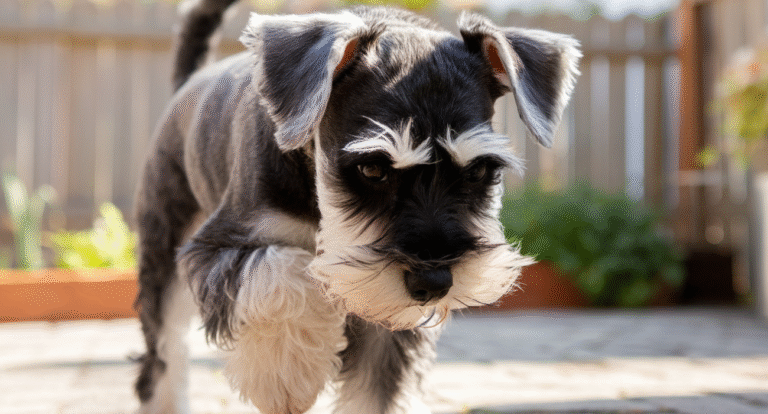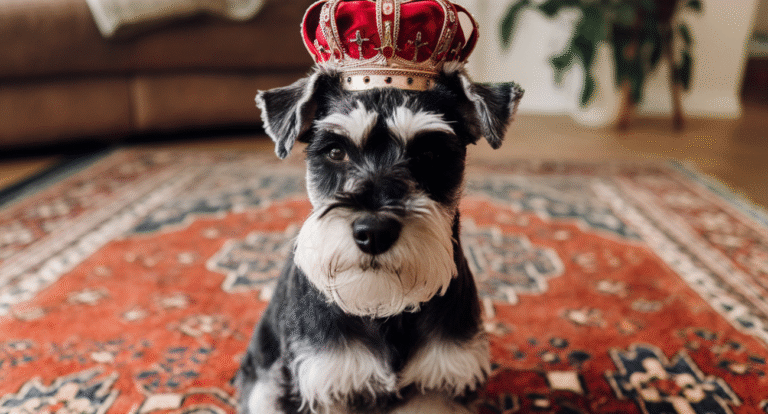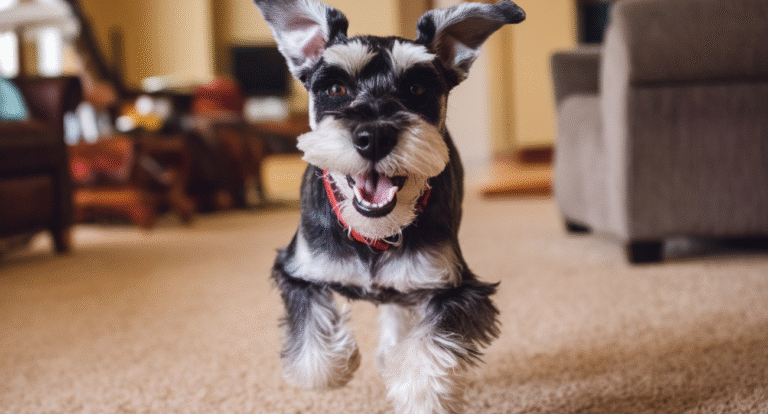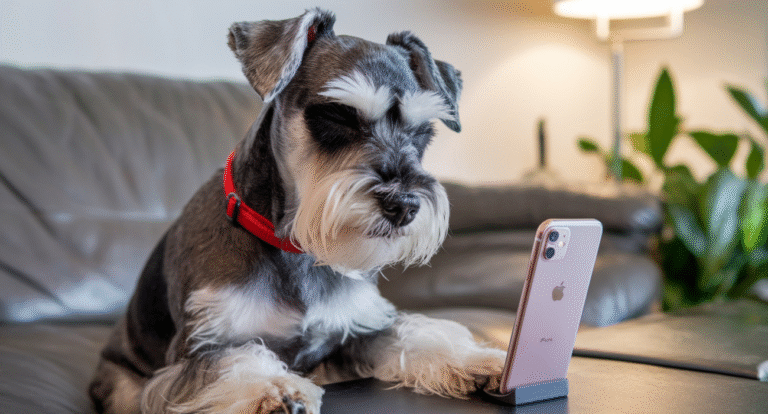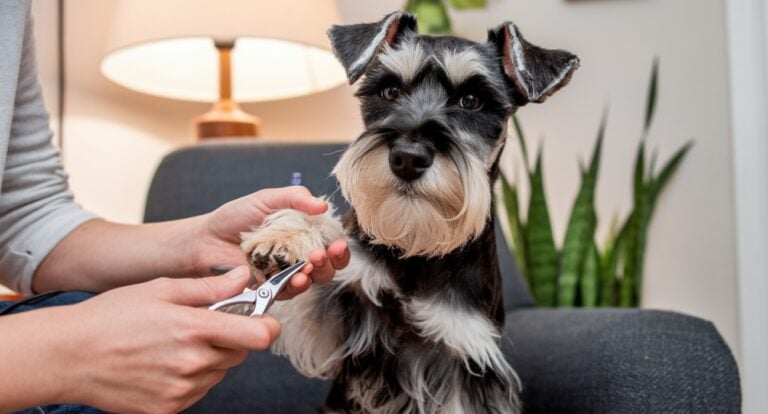Even the most stubborn Schnauzers can learn these tricks. Turn chaos into obedience with these simple, effective techniques.
Miniature Schnauzers are smart, spirited, and sometimes just a little too sure of themselves. They have the brains to learn just about anything, but they also have the wit to outsmart you if you are not prepared. The secret is to work with their intelligence and personality rather than against it. These seven training techniques feel like magic because they are designed to fit the Schnauzer way of thinking.
Receive Content Just Like This to Your Inbox Every Morning
Understanding Your Schnauzer’s Mind
Before diving into specific techniques, it’s crucial to understand what makes these pint-sized powerhouses tick. Miniature Schnauzers were originally bred as ratters and farm dogs, which means they’re naturally alert, independent, and quick to make decisions. This heritage has gifted them with razor-sharp intelligence, but it also means they’re not always content to simply follow orders without question.
Their terrier ancestry gives them a certain… let’s call it “confidence” that can border on stubbornness. They’re the kind of dogs who will look at you sideways when you ask them to sit, as if to say, “What’s in it for me?” This isn’t defiance, it’s smart negotiation. Once you learn to speak their language, training becomes a delightful dance of mutual respect rather than a battle of wills.
The key to Schnauzer success isn’t domination, it’s collaboration. When you treat them as the intelligent partners they are, magic happens.
The Seven Magical Training Techniques
1. Use the Three-Second Reward Rule
A Schnauzer’s mind works fast, faster than you might think. Their brains are constantly processing information, analyzing situations, and making connections. To make sure they connect the reward with the action, always give praise or a treat within three seconds of the desired behavior. This timing creates a clear link in their clever little brain and speeds up learning.
Think of it like taking a photograph of the exact moment they did something right. The three-second window ensures that the “snapshot” captures the behavior you want, not something random they did afterward. Miss this window, and your Schnauzer might think you’re rewarding them for sniffing the ground or looking at a squirrel instead of the perfect “sit” they just performed.
2. Turn Training into a Game
Schnauzers love a challenge and they love to win. Their competitive spirit is part of what makes them such entertaining companions, but it can also be your secret weapon in training. Use games like “find it” with treats or toys to teach commands such as “stay” and “come.” When they are playing, they do not realize they are in training, which makes it feel effortless.
Create treasure hunts where they have to “stay” while you hide treats, then release them to “find it.” Build obstacle courses using household items where they practice “wait,” “over,” and “around” commands. The more you can gamify the experience, the more engaged and enthusiastic your Schnauzer will become. They’ll start seeing you as the fun parent who brings exciting challenges rather than the strict teacher who makes demands.
3. Short and Sweet Sessions
Five to ten minutes of focused training twice a day is more effective than long sessions that wear out their patience. Schnauzers have impressive attention spans when they’re interested, but they also know when they’ve had enough. Pushing past their natural limits doesn’t create better learning, it creates resentment.
End each session on a win so they are eager for the next round. This means if they’re struggling with a new command, finish with something they already know well. Let them succeed, celebrate that success, and leave them wanting more. It’s like ending a great TV episode on a cliffhanger, they can’t wait to see what happens next.
4. Harness Their Curiosity
Instead of fighting distractions, use them as teaching tools. Schnauzers are naturally curious creatures who want to investigate everything from rustling leaves to mysterious sounds. Rather than viewing this as a training obstacle, transform it into an opportunity.
If they want to investigate something, make them sit and look at you first, then release them as a reward. This teaches impulse control in a real-world setting while satisfying their natural curiosity. You’re essentially teaching them that good things come to those who wait, and ask permission first.
5. The Power of the “Place” Command
Teaching your Schnauzer to go to a specific spot such as a mat or bed can stop unwanted behaviors like begging at the table or charging the door. This command becomes their personal reset button, a way to self-regulate when excitement or anxiety starts to take over.
It becomes their personal safe zone and helps them settle down quickly. The beauty of the “place” command is its versatility. Use it when guests arrive, during meal times, or when they need a timeout to calm down. It’s like giving them their own designated thinking chair, but much more positive and empowering.
A well-trained “place” command is like having a magic wand that transforms chaos into calm with just two words.
6. Use Hand Signals Alongside Words
Schnauzers are excellent at reading body language, sometimes better than they are at listening to verbal commands. Their keen observation skills mean they’re constantly watching for visual cues about what you want them to do. Pair simple hand signals with your voice commands and they will start responding even from a distance or in noisy environments.
This dual-communication approach also comes in handy in situations where verbal commands aren’t practical. Whether you’re on the phone, in a quiet library, or trying to get their attention across a noisy dog park, hand signals provide a reliable backup communication system.
7. End with a Victory Lap
After a successful training session, let your Schnauzer celebrate with a quick play session or a favorite toy. This reinforces that learning is fun and leaves them feeling proud of their accomplishment. Think of it as their graduation ceremony after every mini-lesson.
This celebration doesn’t have to be elaborate, a quick game of tug, a favorite squeaky toy, or even an enthusiastic belly rub can serve as their victory reward. The key is making sure they associate the end of training with something positive and energizing.
Training Timeline and Expectations
Understanding realistic timelines can help set appropriate expectations for both you and your Schnauzer. Here’s a general guide for common commands:
| Command | Initial Learning | Reliable Response | Mastery Level |
|---|---|---|---|
| Sit | 2-3 days | 1-2 weeks | 3-4 weeks |
| Stay (5 seconds) | 1 week | 2-3 weeks | 1-2 months |
| Come | 1-2 weeks | 1-2 months | 3-6 months |
| Place/Go to Bed | 3-5 days | 2-3 weeks | 1-2 months |
| Leave It | 1 week | 3-4 weeks | 2-3 months |
| Heel/Walk Nicely | 2-3 weeks | 1-2 months | 3-6 months |
Remember, these timelines can vary significantly based on your consistency, your Schnauzer’s age and personality, and the amount of daily practice. Some dogs might surprise you by mastering commands faster, while others might need extra time and patience.
Common Schnauzer Training Challenges
Every breed comes with its unique quirks, and Schnauzers are no exception. They might try to negotiate terms (“I’ll sit, but only if you have treats”), show selective hearing when something more interesting catches their attention, or demonstrate their independence by adding their own creative flair to your commands.
The trick is to stay one step ahead of their clever minds. Be consistent, be patient, and remember that their occasional stubborn moments aren’t personal, they’re just being true to their terrier nature. When they test boundaries, it’s often because they’re smart enough to see if the rules still apply in different situations.
Training a Schnauzer isn’t about breaking their spirit, it’s about channeling their intelligence and independence into positive behaviors that work for both of you.
Your Partner in Crime (Fighting)
The beauty of these techniques lies in their simplicity and their respect for your Schnauzer’s intelligence. You’re not trying to dominate or outsmart them, you’re learning to communicate in a way that makes sense to their particular brand of canine genius. Consistency is the real magic ingredient. By practicing these techniques daily, you will build trust, strengthen your bond, and bring out the best in your Miniature Schnauzer’s natural talents.
Remember, every Schnauzer is an individual with their own personality quirks and learning style. What works like magic for one might need tweaking for another. The real magic happens when you combine these proven techniques with patience, consistency, and a genuine appreciation for your Schnauzer’s unique character. Before you know it, you’ll have a well-trained companion who’s eager to learn, happy to please, and still maintains that delightful Schnauzer spirit that made you fall in love with them in the first place.


